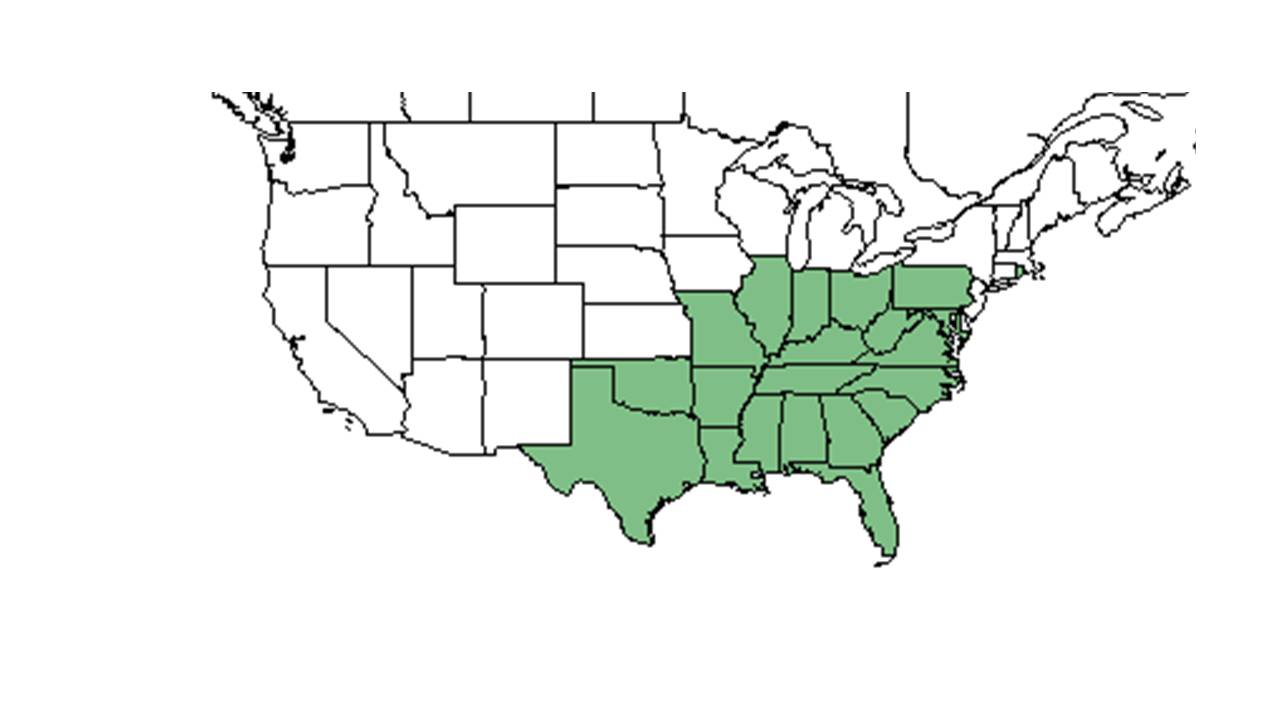Difference between revisions of "Dichanthelium laxiflorum"
| Line 22: | Line 22: | ||
==Ecology== | ==Ecology== | ||
===Habitat=== <!--Natural communities, human disturbed habitats, topography, hydrology, soils, light, fire regime requirements for removal of competition, etc.--> | ===Habitat=== <!--Natural communities, human disturbed habitats, topography, hydrology, soils, light, fire regime requirements for removal of competition, etc.--> | ||
| + | It can live in disturbed areas (e.g., clear-cut, thinned, burned) with clay to sandy loam soil in subtropical climates.<ref name="Iglay et al 2010"/> It can also dwell in dry areas.<ref name="Taft 2003"/> It can live in sandstone barrens communities.<ref name="Taft 2003"/> It can be found in loblolly pine communities<ref>Miller, J. H. and K. V. Miller (1999). Forest plants of the southeast, and their wildlife uses Champaign, IL, Southern Weed Science Society.</ref> as well as longleaf pine communities.<ref name="Cohen et al 2004"/> | ||
===Phenology=== <!--Timing off flowering, fruiting, seed dispersal, and environmental triggers. Cite PanFlora website if appropriate: http://www.gilnelson.com/PanFlora/ --> | ===Phenology=== <!--Timing off flowering, fruiting, seed dispersal, and environmental triggers. Cite PanFlora website if appropriate: http://www.gilnelson.com/PanFlora/ --> | ||
===Seed dispersal=== | ===Seed dispersal=== | ||
| − | It can be found in the seed bank of disturbed and undisturbed sites<ref name="Cohen et al 2004">Cohen, S., R. Braham, et al. (2004). "Seed bank viability in disturbed longleaf pine sites." Restoration Ecology 12: 503-515.</ref> | + | It can be found in the seed bank of disturbed and undisturbed sites.<ref name="Cohen et al 2004">Cohen, S., R. Braham, et al. (2004). "Seed bank viability in disturbed longleaf pine sites." Restoration Ecology 12: 503-515.</ref> It can also be found in the seed bank of a Florida flatwoods plant community.<ref>Kalmbacher, R., N. Cellinese, et al. (2005). "Seeds obtained by vacuuming the soil surface after fire compared with soil seedbank in a flatwoods plant community." Native Plants Journal 6: 233-241.</ref> |
===Seed bank and germination=== | ===Seed bank and germination=== | ||
| + | From observing the results of Taft's prescribed burns, fire seems to be required for germination.<ref name="Taft 2003">Taft, J. B. (2003). "Fire effects on community structure, composition, and diversity in a dry sandstone barrens." Journal of the Torrey Botanical Society 130: 170-192.</ref> | ||
===Fire ecology=== <!--Fire tolerance, fire dependence, adaptive fire responses--> | ===Fire ecology=== <!--Fire tolerance, fire dependence, adaptive fire responses--> | ||
| + | In an experiment by Iglay, Leopold, Miller, and Burger, D. laxiflorum had a positive response to dormant season prescribed fire and imazapyr, a herbicide.<ref name="Iglay et al 2010">Iglay, R. B., B. D. Leopold, et al. (2010). "Effect of plant community composition on plant response to fire and herbicide treatments." Forest Ecology and Management 260: 543-548.</ref> Following an early dormant season, moderate-intensity burn in 1989, it rapidly increased, probably due to a stimulation if the seed bank. By 1995, D. laxiflorum occurred in 64% of the quadrats in Illinois and was the species with the greatest frequency, replacing Schizachyrium scoparium as the dominant species.<ref name="Taft 2003"/> | ||
===Pollination=== | ===Pollination=== | ||
===Use by animals=== <!--Herbivory, granivory, insect hosting, etc.--> | ===Use by animals=== <!--Herbivory, granivory, insect hosting, etc.--> | ||
Revision as of 14:46, 10 June 2015
| Dichanthelium laxiflorum | |
|---|---|

| |
| Scientific classification | |
| Kingdom: | Plantae |
| Division: | Magnoliophyta - Flowering plants |
| Class: | Liliopsida – Monocotyledons |
| Order: | Cyperales |
| Family: | Poaceae ⁄ Gramineae |
| Genus: | Dichanthelium |
| Species: | D. laxiflorum |
| Binomial name | |
| Dichanthelium laxiflorum (Lam.) Gould | |

| |
| Natural range of Dichanthelium laxiflorum from USDA NRCS Plants Database. | |
Contents
Description
Distribution
Ecology
Habitat
It can live in disturbed areas (e.g., clear-cut, thinned, burned) with clay to sandy loam soil in subtropical climates.[1] It can also dwell in dry areas.[2] It can live in sandstone barrens communities.[2] It can be found in loblolly pine communities[3] as well as longleaf pine communities.[4]
Phenology
Seed dispersal
It can be found in the seed bank of disturbed and undisturbed sites.[4] It can also be found in the seed bank of a Florida flatwoods plant community.[5]
Seed bank and germination
From observing the results of Taft's prescribed burns, fire seems to be required for germination.[2]
Fire ecology
In an experiment by Iglay, Leopold, Miller, and Burger, D. laxiflorum had a positive response to dormant season prescribed fire and imazapyr, a herbicide.[1] Following an early dormant season, moderate-intensity burn in 1989, it rapidly increased, probably due to a stimulation if the seed bank. By 1995, D. laxiflorum occurred in 64% of the quadrats in Illinois and was the species with the greatest frequency, replacing Schizachyrium scoparium as the dominant species.[2]
Pollination
Use by animals
Diseases and parasites
Conservation and Management
Cultivation and restoration
References and notes
Photo Gallery
- ↑ 1.0 1.1 Iglay, R. B., B. D. Leopold, et al. (2010). "Effect of plant community composition on plant response to fire and herbicide treatments." Forest Ecology and Management 260: 543-548.
- ↑ 2.0 2.1 2.2 2.3 Taft, J. B. (2003). "Fire effects on community structure, composition, and diversity in a dry sandstone barrens." Journal of the Torrey Botanical Society 130: 170-192.
- ↑ Miller, J. H. and K. V. Miller (1999). Forest plants of the southeast, and their wildlife uses Champaign, IL, Southern Weed Science Society.
- ↑ 4.0 4.1 Cohen, S., R. Braham, et al. (2004). "Seed bank viability in disturbed longleaf pine sites." Restoration Ecology 12: 503-515.
- ↑ Kalmbacher, R., N. Cellinese, et al. (2005). "Seeds obtained by vacuuming the soil surface after fire compared with soil seedbank in a flatwoods plant community." Native Plants Journal 6: 233-241.